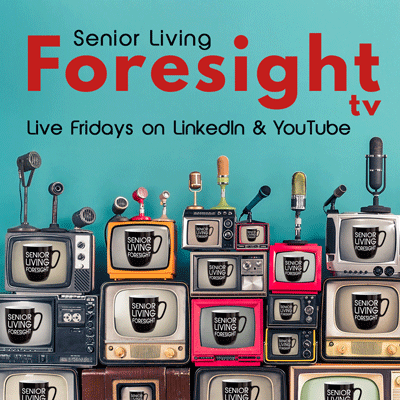By Jack Cumming
This is part 1 of a two-part article examing how California’s government is addressing the issue of the increasing number of seniors in the state.
On September 17, California took a big step toward becoming more age-friendly, when a group of selected “stakeholders” met for the first time in Sacramento to discuss a Master Plan for Aging for the State. The initiative was in response to Governor Gavin Newsom’s June Executive Order, which makes it a State of California priority to develop a plan by a year from now. This article is about the Master Plan opportunity.
Creating the Master Plan
The “stakeholders” are not the only constituent group to be consulted in the development of the plan. There is also a Cabinet-level Workgroup for Aging to advise the Secretary of the California Health and Human Services Agency. The Secretary has the top-level responsibility to develop the plan. The goal is a plan to “promote healthy aging and prepare the state for the coming demographic changes.”
There is a risk that the issues of aging will result in partisan divides based on socioeconomic circumstances. Some believe that the affluent need no help. Nevertheless, the afflictions and the inevitable outcome of old age do not differentiate among socioeconomic circumstances. In some instances, programs for the indigent, specifically the Program of All-Inclusive Care for the Elderly (PACE), can be more comprehensive and responsive than anything available even to the most affluent.
Thinking of aging requires us to think more broadly than what income-differentiated politics might suggest. Yes, the poor need financial assistance. Yet, it’s also true that many people of affluence are impoverished by age and end their days dependent on Medi-Cal for long term care services. Old age is the great social leveler.
The “stakeholders” group was designated in the Executive Order to include “older Californians, adults with disabilities, local government, healthcare providers, health plans, employers, community-based organizations, foundations, academic researchers, and organized labor”. As far as I could tell from listening to the half-day meeting, there were no “older Californians”, if one considers that to mean the beneficiaries of state aging services, regulations, and policies.
A Different Perspective
It’s one thing to be concerned with aging and to provide services to those who are aging, and it’s quite another thing to be living through old age. The living experience involves loss; the ups and downs of depression; the fear that one is no longer valued; and the certainty of one’s impending demise. That is a perspective that deserves representation, and it’s hard to imagine an age-friendly California without it. The risk is that otherwise, the development of a plan becomes no more than a political balancing act among competing financially or charitably interested service groups.
Bias toward people merely because they are old remains a particularly thorny challenge. The elderly are often not as quick or responsive as they once were. Those who show signs of decline are more evident and that perception (i.e., that old people are doddering), can result in unconscious bias. That unnoticed bias may, for instance, explain why the elderly are underrepresented among the “stakeholders”.
The Master Plan is not a new idea. The Older Californians Act, which was implemented over twenty years ago, provided in part: “The California Department of Aging shall ensure that, to the extent possible, the services provided for in accordance with this division shall be coordinated and integrated with services provided to older individuals by other entities of the state. That integration may include, but not be limited to, the reconfiguration of state departments into a coordinated unit that can provide for multiple services to the same consumers”. Services for the elderly provided under the auspices of the state government continue to be spread across many departments.
Who is Making Decisions for Me?
A hint at the focus of the plan’s development was provided in the directive that the “stakeholders’” group have at least two specific subcommittees, a “Research Subcommittee and a Long-Term Care Subcommittee.” Moreover, the Governor directed that the “Master Plan for Aging include key data indicators, with 10-year targets, to support the implementation of the Master Plan.”
That said, there is ample opportunity for public comments and public input, both at the meetings and through written submissions. In fact, the public comments, which followed the presentations and discussions among the component representative “stakeholders” on September 17, were among the more cogent contributions. For instance, the first speaker was a man who serves in the California Senior Legislature, a group that one might have thought would be represented among the “stakeholders”. He was the first elderly person to speak during the meeting.
Thus, it seems that input into the Master Plan will largely come from parties with a financial interest in the outcomes, whether they are unions looking to improve the lives of those they represent or senior services businesses – nonprofit or otherwise – providing services to the elderly. That leaves us free to consider what common sense might suggest be included in such a plan if we look at it through the lens of an elderly person. Reverend Bob Nicholson, a prominent resident advocate, calls for inclusion by asserting, “If it’s about us, then with us”. The Master Plan will be stronger if the elderly have a say in its development.
We’ll take up the question of what such a Master Plan might include in Part Two of this article.





